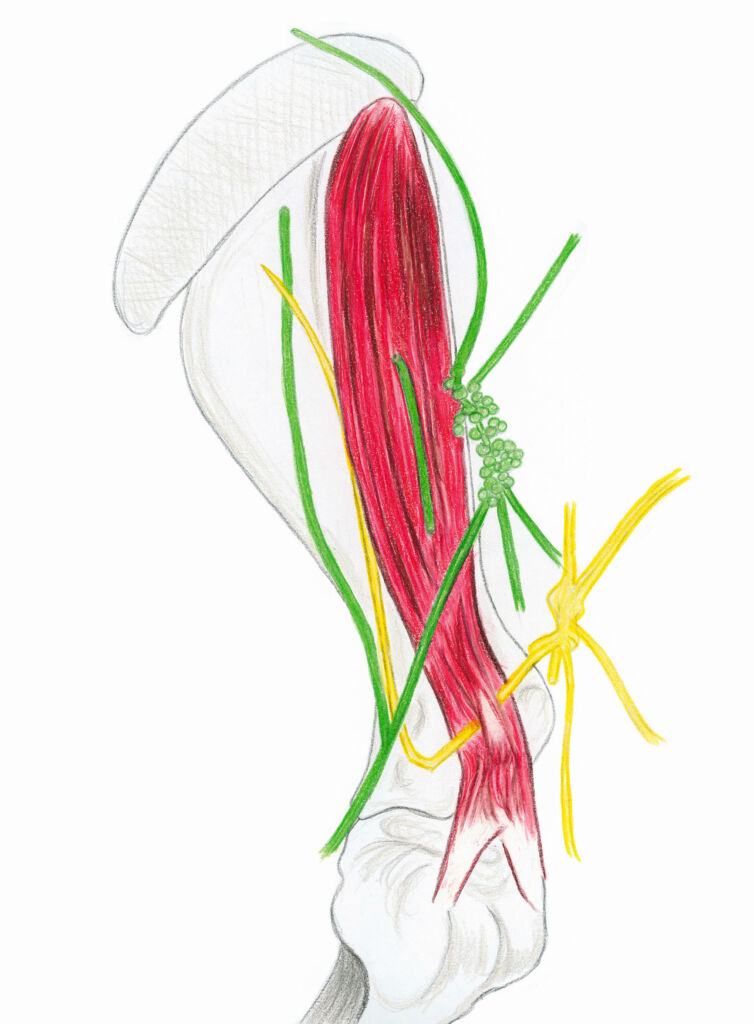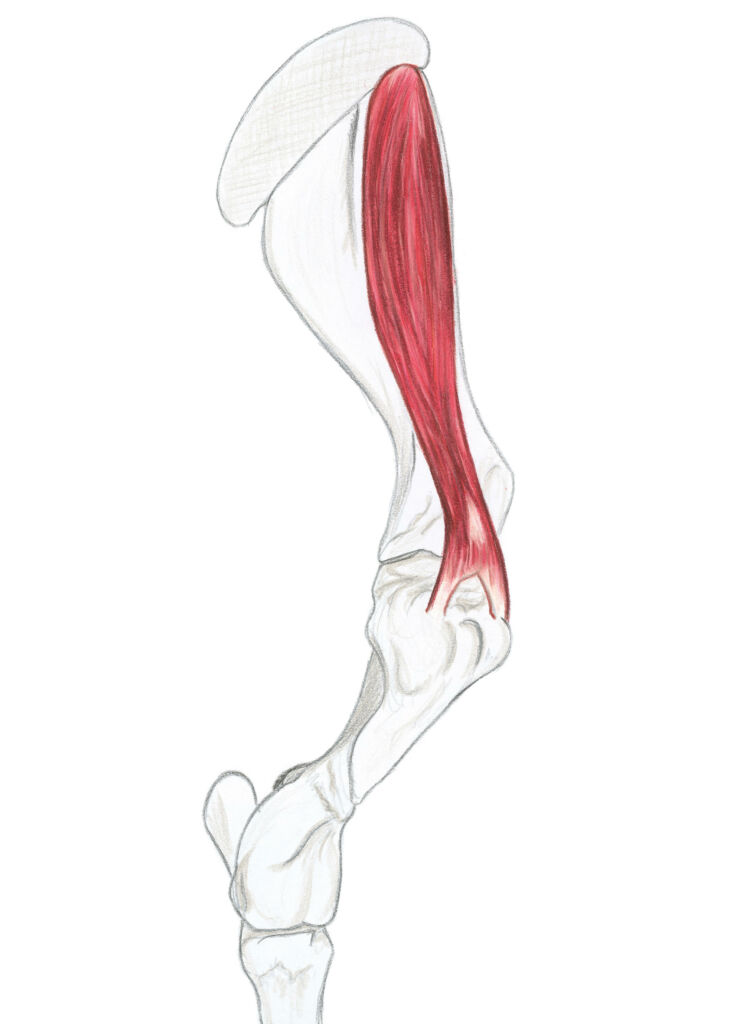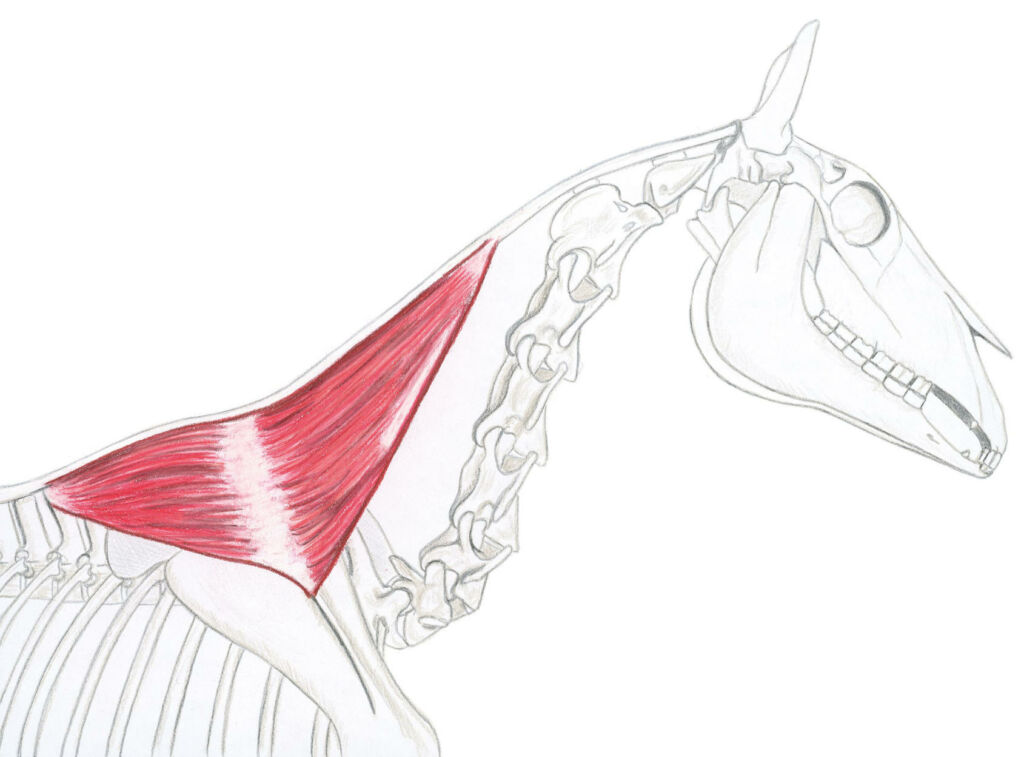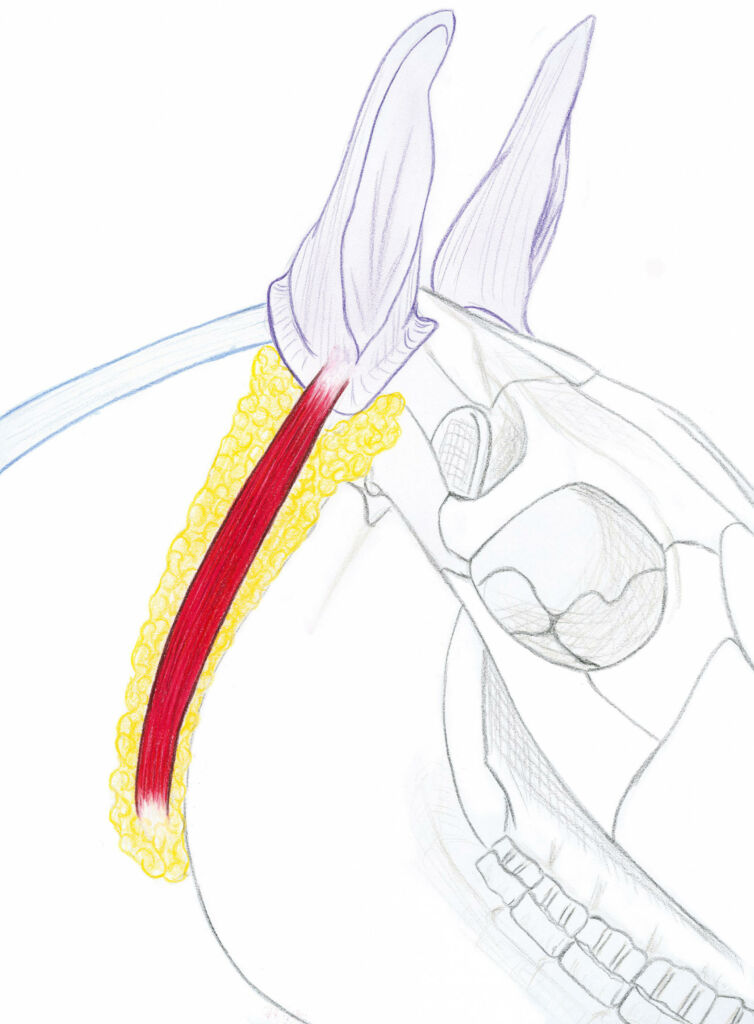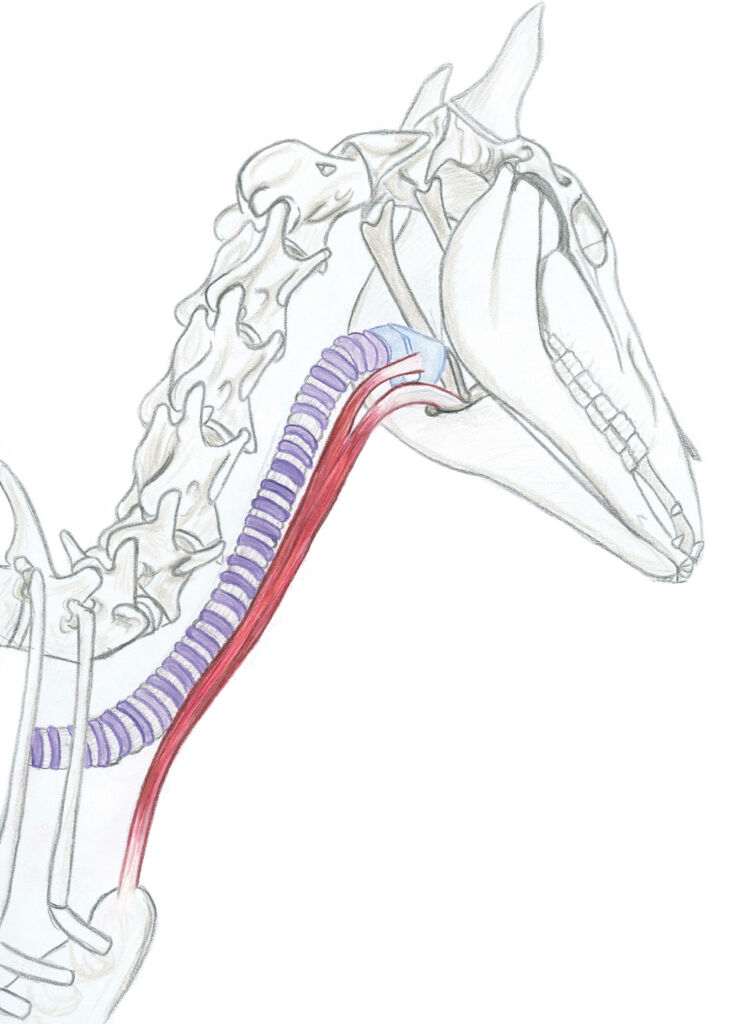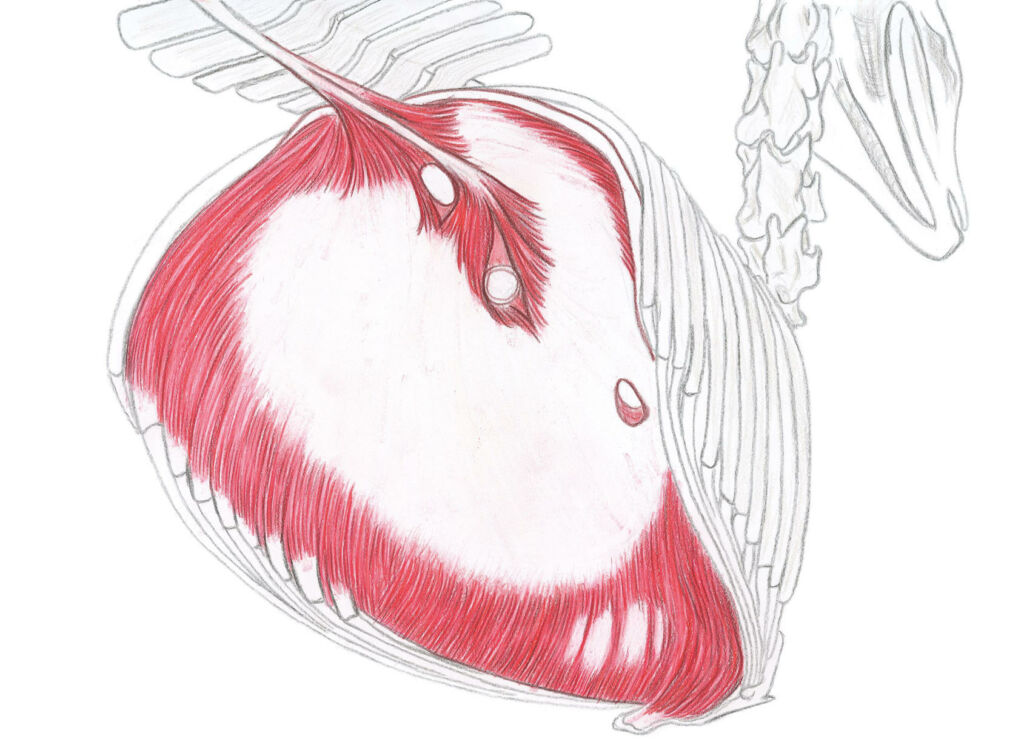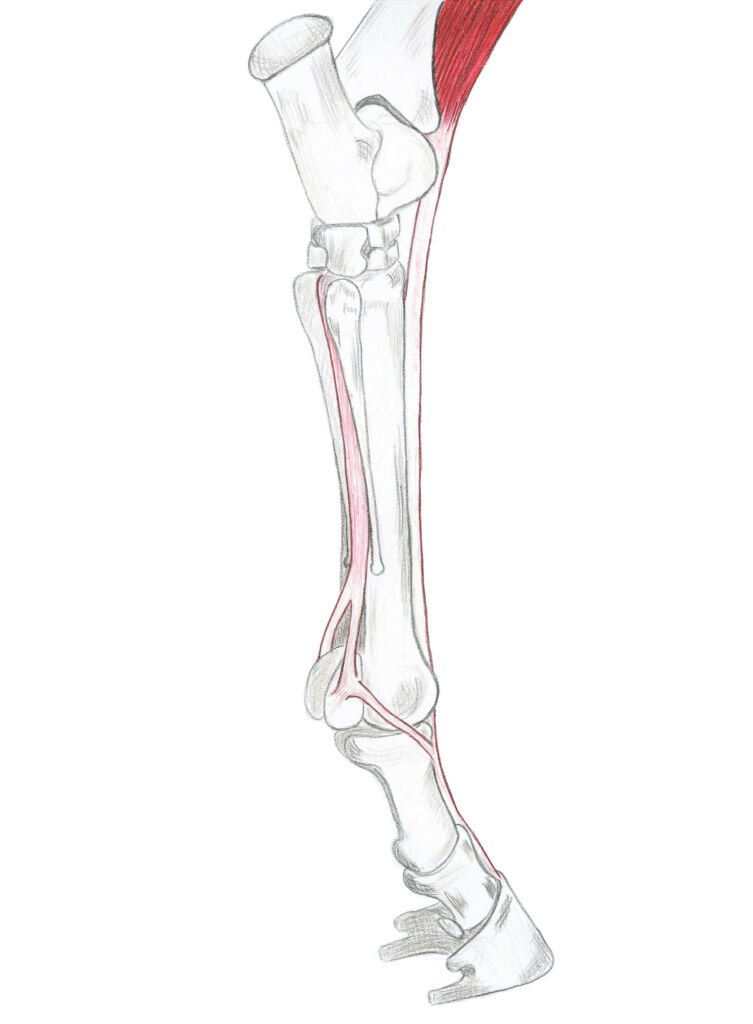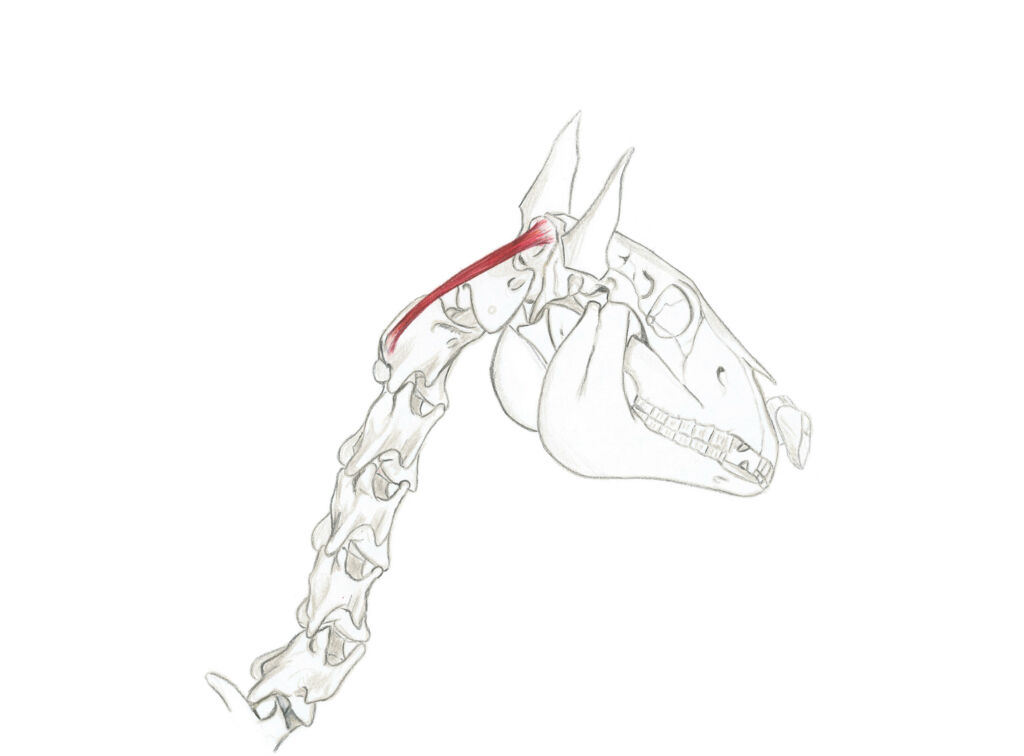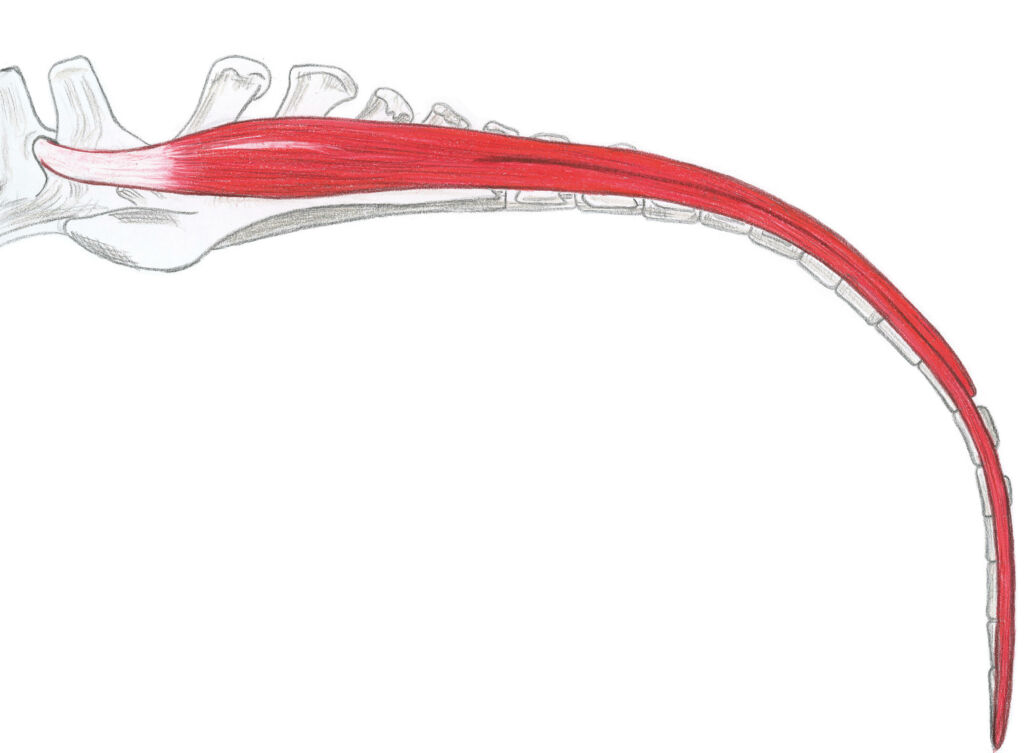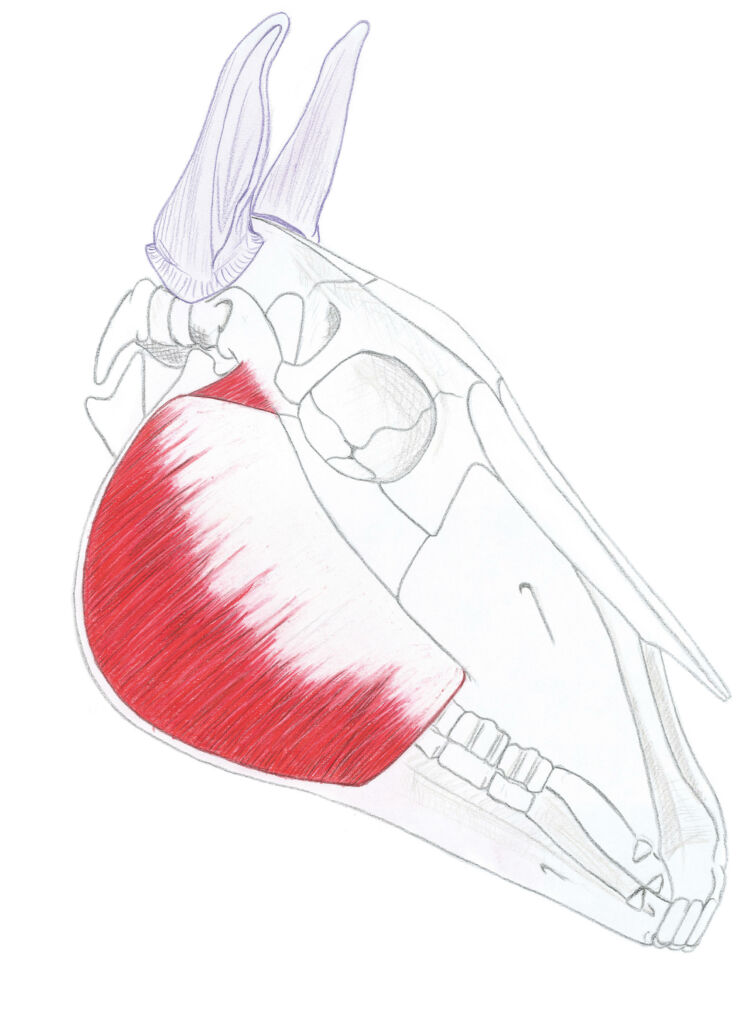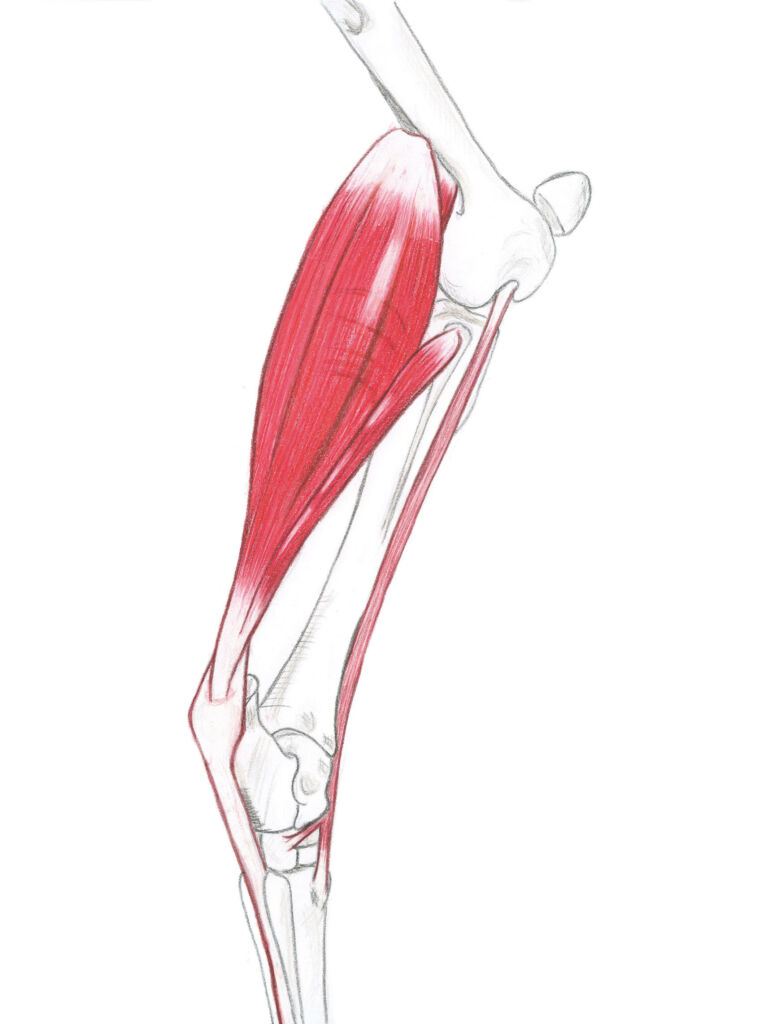The sternohyoid and sternothyroid muscles, long and flattened, run along the ventral side of the trachea from the sternal manubrium to the laryngeal region. They are initially joined together and separate at their termination into two parts:
- Sternohyoid: ventral side of the body of the hyoid bone.
- Sterno-thyroid: caudal edge of the thyroid cartilage blade of the larynx.
Fibrous in ungulates, where it has long been referred to as the “fetlock suspensory ligament”. It is very strong and entirely formed of white fibrous tissue, within which striated muscle fibers persist. It covers the palmar surface of the main metacarpal/metatarsal bone.
The large dorsal rectus muscle of the head: it is part of the juxta-vertebral muscles of the nape of the neck, the various muscular systems change in the atloid region to act especially on the head, the large dorsal rectus participates in the extension and the inclination of the head.
Part of the intrinsic tail muscles along with the sacrococcygeals: dorsal-medial, dorsal-lateral, ventral-medial, ventral-lateral and the coccygeal intertransversaries (dorsal and ventral). All the intrinsic muscles are maintained by the coccygeal fascia.
